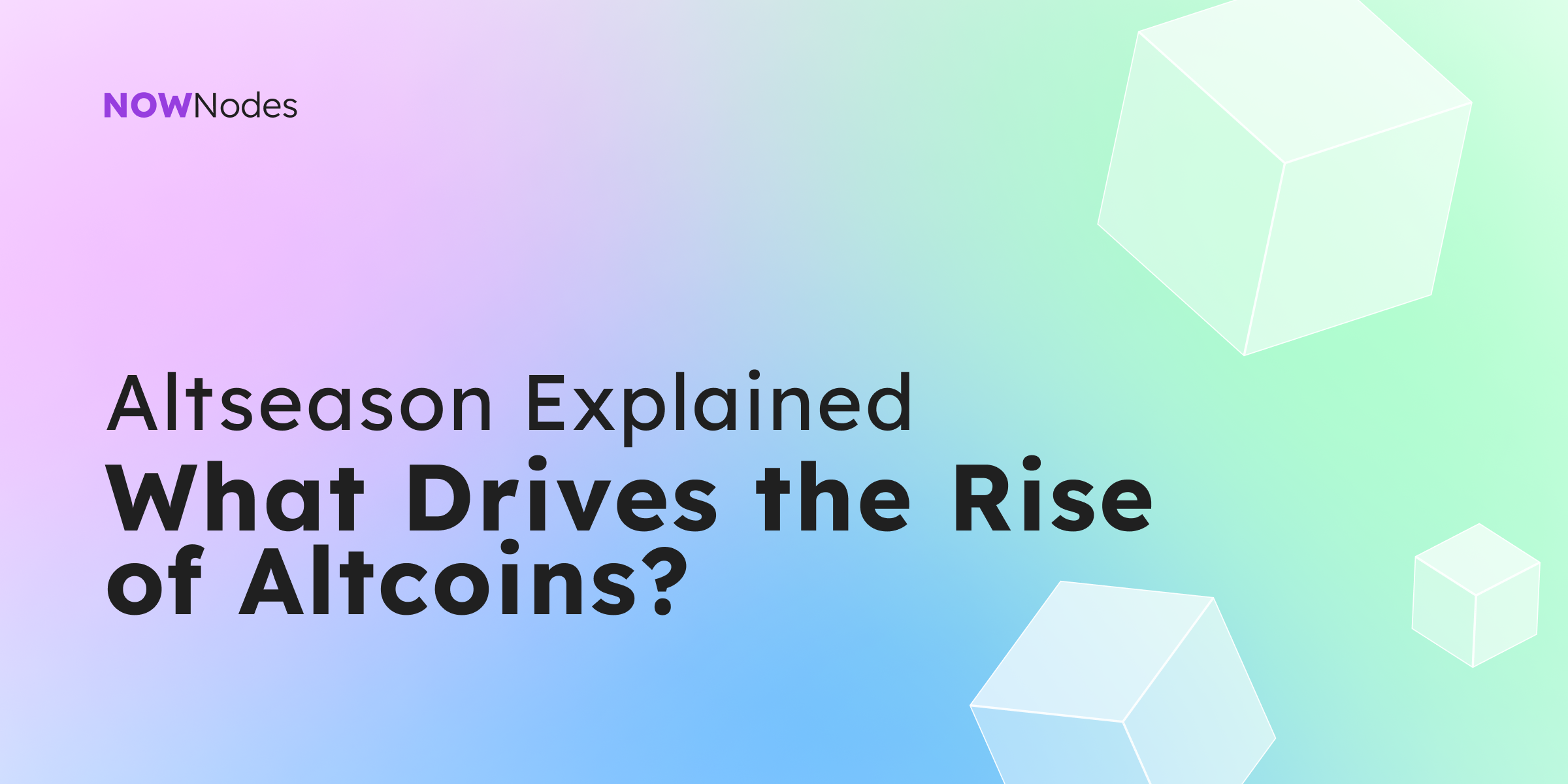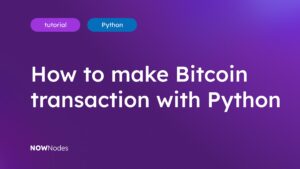“Altseason” refers to a period in the cryptocurrency community when altcoins—cryptocurrencies other than Bitcoin—experience significant price increases and outperform Bitcoin in terms of gains. During altseason, traders and investors often shift their focus from Bitcoin to alternative digital assets, actively seeking better returns. This period sees a surge in activity as altcoins experience significant price increases.
While Bitcoin reigns as the king of the crypto market, altcoins significantly contribute to the broader ecosystem by providing innovations and specialized applications. During altseason, the rise of altcoins stems not just from speculation, but also from various market dynamics and technological advancements that bring these alternative currencies into the spotlight.
What Causes Altseason?
Understanding altseason requires a deeper dive into the factors that contribute to this shift in market behavior. Here are the key drivers behind altseason:
Bitcoin Consolidation or Decline:
When Bitcoin experiences a period of consolidation—meaning its price stabilizes without significant upward or downward movement—investors often look for opportunities elsewhere. Bitcoin’s dominance in the crypto market can limit the upside potential for its price during these periods. As a result, traders begin to shift capital into altcoins, hoping to capitalize on faster gains. Similarly, when Bitcoin’s price declines, investors often move their funds to altcoins perceived to have stronger growth potential.
Altcoin Innovation:
Altcoins offer more than just an alternative to Bitcoin. Many of them, such as Ethereum, Solana, and Polkadot, bring innovative technologies to the table.
For example, Ethereum introduced smart contracts, which revolutionized decentralized finance (DeFi) and enabled the creation of decentralized applications (DApps). This innovation changed the landscape of blockchain technology.
Similarly, Solana offers faster transaction speeds and lower fees, making it attractive to both developers and investors. When altcoins introduce new features or major upgrades, they often experience a surge in demand, contributing to the excitement of altseason.
Market Sentiment and FOMO:
Market sentiment plays a massive role in driving altseason. Positive news, such as successful technological upgrades, new partnerships, or regulatory clarity, can lead to a surge in confidence among investors. This often leads to “FOMO” (Fear of Missing Out), where investors rush to buy altcoins in hopes of profiting from their rise. Social media platforms, particularly Twitter, Reddit, and Telegram, amplify this sentiment, fueling even more investment into altcoins.
Increased Trading Volume on Altcoin Pairs:
Another contributing factor is the increase in trading volume for altcoin pairs. Cryptocurrency exchanges often offer altcoin trading pairs that don’t involve Bitcoin. During altseason, there’s a noticeable spike in activity on these pairs, further reinforcing the rise in altcoin prices. When altcoin volume surpasses Bitcoin’s, it’s usually a clear sign that the market has entered altseason.
Bitcoin’s Market Dominance Decline:
Bitcoin’s market dominance refers to the percentage of the total crypto market capitalization that Bitcoin holds. During periods when Bitcoin’s dominance decreases, altcoins tend to flourish. Historically, Bitcoin has dominated the market with 60-70% market share, but when this figure drops, it usually signals that capital is flowing into altcoins, marking the start of altseason.
New Investors and Retail Interest:
During bull markets, the influx of new investors often triggers altseason. Many retail investors, attracted by the promise of higher returns, diversify their crypto holdings by purchasing smaller-cap altcoins, believing they have more room for growth compared to Bitcoin. As retail interest grows, the demand for altcoins increases, propelling their prices higher.
Why Altcoins Matter
Altcoins are more than just speculative assets. Many of them are integral to the future of blockchain technology. They often serve as the testing grounds for new ideas and innovations that can reshape industries like finance, healthcare, supply chain management, and gaming.
Here are some of the most important roles altcoins play:
Decentralized Finance (DeFi):
Ethereum and other smart contract platforms have driven the growth of decentralized finance (DeFi), allowing users to lend, borrow, and trade without relying on traditional financial institutions.
Smart Contracts:
Altcoins such as Ethereum, Binance Smart Chain (BSC), and Solana have built platforms that enable the execution of smart contracts. These self-executing contracts allow for trustless transactions, eliminating the need for intermediaries and enabling decentralized applications (DApps) to function seamlessly.
Interoperability:
Some altcoins, like Polkadot (DOT) and Cosmos (ATOM), focus on interoperability—enabling different blockchain networks to communicate and share data. This creates a more connected and efficient ecosystem, making it easier for developers to build on multiple platforms and for users to move assets between chains.
Scalability Solutions:
As blockchain adoption grows, scalability becomes a major concern. Altcoins like Solana and Polygon (MATIC) offer solutions to this problem by providing faster transaction times and lower fees compared to Bitcoin. These scalability improvements make blockchain technology more practical for everyday use cases, from micropayments to complex financial transactions.
Privacy Coins:
Altcoins like Monero (XMR), Zcash (ZEC), and Firo (formerly Zcoin) focus on privacy, allowing users to make transactions without revealing their identities or transaction details. In an increasingly digital world where privacy is a growing concern, these coins are gaining traction among individuals and businesses alike.
How to Prepare for Altseason
If you’re a crypto investor or trader, preparing for altseason means doing your homework on promising altcoins and keeping an eye on market trends. Here are a few tips:
Diversify Your Portfolio:
Don’t put all your eggs in one basket. Diversify your investments across different altcoins that have strong fundamentals, innovative use cases, and active communities.
Stay Informed:
Keep up with the latest news in the cryptocurrency space. Follow reputable sources and pay attention to technological upgrades, partnerships, and regulatory developments that could impact the performance of specific altcoins.
Use Reliable Infrastructure:
Having access to fast and reliable infrastructure is essential for trading and using altcoins effectively. This is where services like NOWNodes come in. NOWNodes offers access to a wide range of blockchain nodes, including those for popular altcoins like Ethereum, Binance Smart Chain, Solana, and more. Whether you’re a trader, developer, or enthusiast, NOWNodes provides the infrastructure you need to stay connected to the altcoin networks.
Manage Risk:
While altseason can offer significant profit potential, it’s also a time of heightened volatility. Make sure to manage your risk by setting stop-losses and only investing what you can afford to lose.
Conclusion
Altseason is an exciting time for crypto traders and investors, offering opportunities for significant gains in altcoins as the market shifts away from Bitcoin. By understanding the factors that drive altseason and preparing with the right tools and knowledge, you can make the most of this dynamic period.
With innovations in decentralized finance, smart contracts, and privacy, altcoins are playing an increasingly important role in the blockchain space. And with NOWNodes (https://nownodes.io) providing the infrastructure you need to access these networks, you’re well-positioned to take advantage of the altcoin opportunities ahead.



